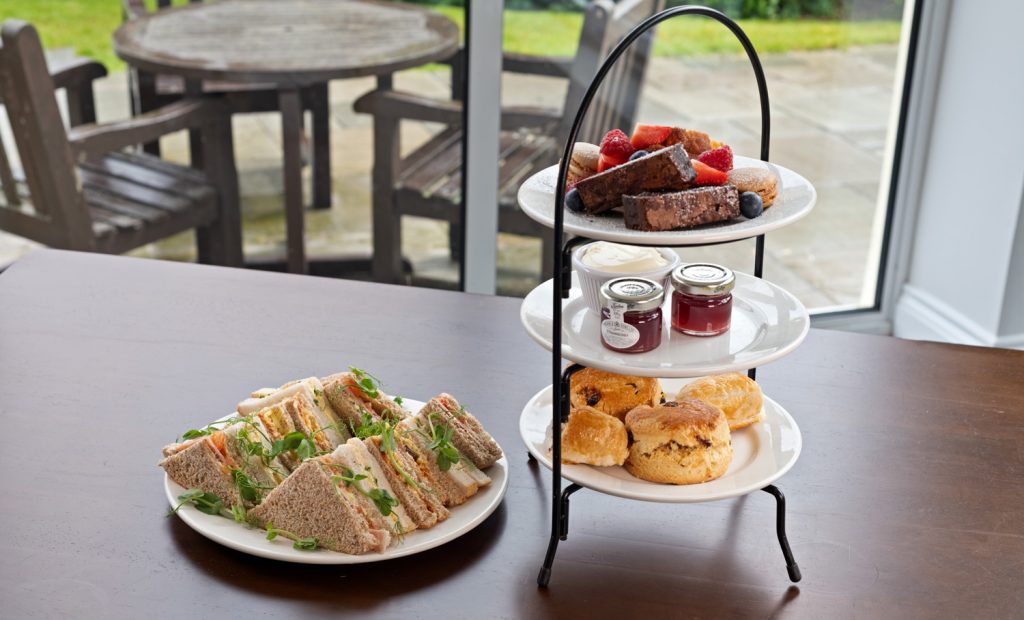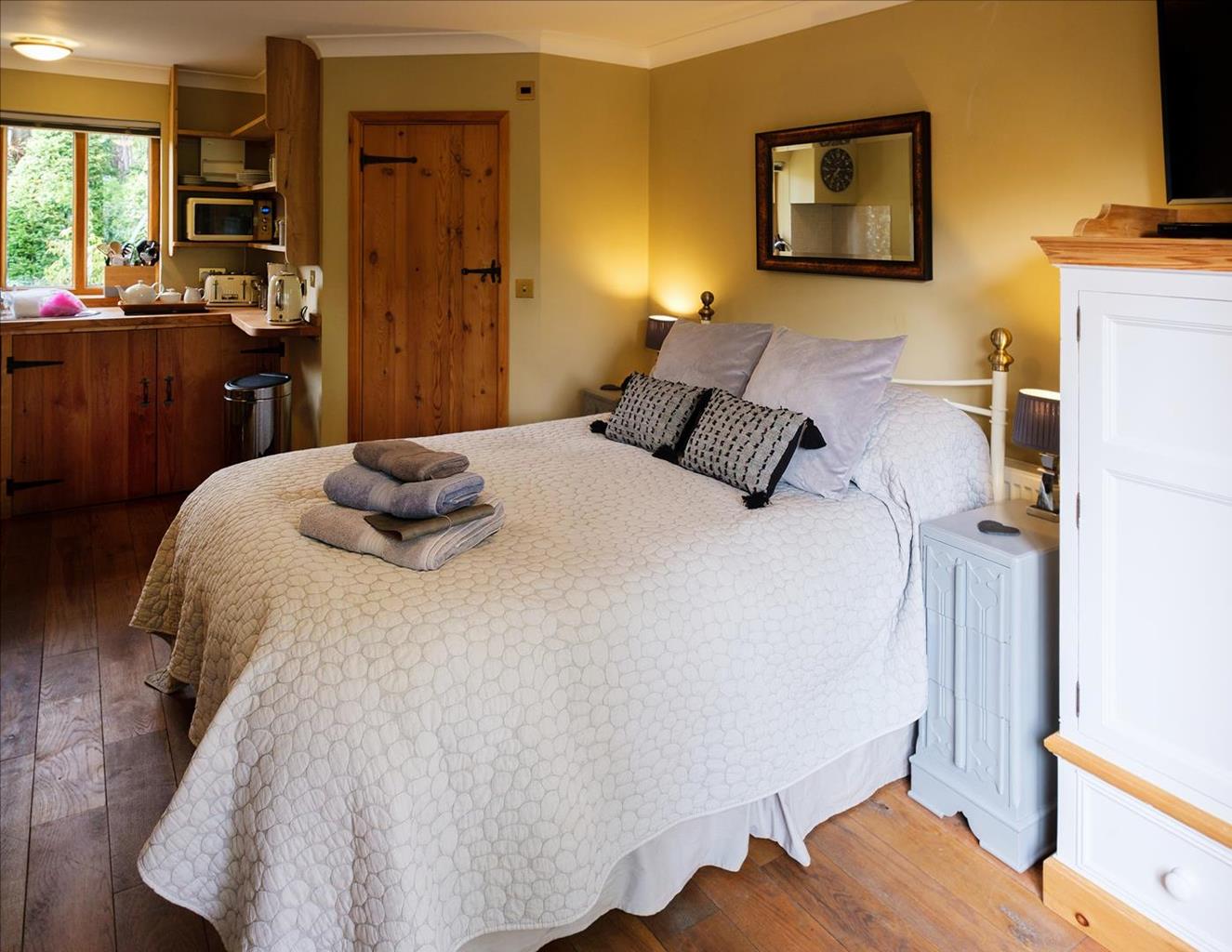Made up of four quirky properties close to Thetford, Quintet Cottages have been lovingly…
Exploring the Little Ouse from Thetford

Walk along the river from the medieval town and see geese, ducks and a silent forest.
5.25 miles (8.4kms)
About the walk
On 1 September, 1107, an old warrior friend of William the Conqueror called Roger Bigod stooped to lay the foundation stone of what he hoped would be a great priory church – also hoping that the Cluniac monks who would live there would pray for his immortal soul. He had left it not a moment too long, for he died a week later. He wanted to be buried at Thetford, but was not in a position to argue when the Bishop of Norwich took his body off to his own cathedral for subsequent burial.
A Cluniac heritage
Today, the silent ruins that stand beside the peaceful River Ouse belie the fact that this was once a powerful and wealthy community. Besides the large church, there was a huge cloister, a warming house with a sleeping room above, an infirmary, a dining room and a number of kitchens and parlours. The Cluniac monks lived a comfortable life, compared to many others.
In the 13th century, a very ill local craftsman prayed to the Virgin Mary to make him well; she appeared to him in dreams and told him to build a Lady Chapel. When the prior ignored the craftsman's pleas, the Virgin is said to have gone to a local woman instead, paralysing her arm when she did not inform the prior of the message immediately. The chapel was built and, while an old statue of the Virgin was being cleaned to be its centrepiece, a hole was found in its head. Inside the hole were relics, which were said to have fabulous healing powers. For many years, the sick and desperate paid the priory handsomely to be allowed near the statue.
The Rights of Man
One of Thetford’s most famous sons is Thomas Paine, whose statue can be seen in King Street holding a copy of his book The Rights of Man – much speculation has been made as to why he is holding it upside down. Born in Thetford in 1737, the son of a corset maker, Paine attended Thetford Grammar School for a while before becoming an apprentice to his father. He went to sea aged 19 and, after trying his hand as a tax officer, emigrated to the United States in 1774. It was here that he turned to journalism and became a strong supporter of American independence from Great Britain. Returning to Europe he wrote The Rights of Man. Outlawed for his anti-monarchist views, Paine fled to revolutionary France where he was subsequently imprisoned for pleading clemency in the execution of Louis XVI. Narrowly escaping execution himself, he eventually returned to the United States in 1802 at the invitation of Thomas Jefferson. He died in New York in 1809, but because of his critical views on organised religion his funeral was attended by just a handful of mourners.
Walk directions
Head for the splendid red, gold and green Town Bridge (built 1829). Cross the road and go down the peaceful river path opposite with the river on your right. Passing underneath a road bridge, you will be able to make out the ruins of Thetford Priory to the right across the river. When you reach the Blaydon Footbridge (built in 1970 and named after a local dignitary), take a few minutes to head to the main road and turn left. Here you will find the ruins of the little medieval Church of the Holy Sepulchre, and opposite, the site of Red Castle, Thetford's second fort, raised in the 12th century.
Return to the footbridge and cross over it, then turn left along the river bank to stroll through water-meadows and past a weir. When the path bears right to meet a road, keep straight ahead under a bridge. You are now on the Little Ouse Path to Brandon, which is rich with the scent of meadowsweet in springtime.
Continue beneath the roaring bypass, and past the still, brown Kingfisher Lake where local folk sit to fish. You leave the sounds of the town behind you as you reach Abbey Heath Weir. When the path bends, keep to the river track, which is littered with sandy molehills.
When the path veers to the right, gently uphill away from the river, continue along this through dense Forestry Commission woodland, ignoring the broad forestry track off to the right.
Emerging from the woods, turn right up a grassy track, which leads slightly uphill towards a railway bridge. When you reach a T-junction just before the railway bridge, turn right along the dirt road used by Forestry Commission vehicles. Stay on this track as the sound of the bypass traffic grows increasingly loud to your left. The track ends at the main road, but a path to your right leads you through a gate and down an incline, where you will find yourself at the underpass again. Retrace your steps along the river to Blaydon Footbridge, but do not cross it. Continue across the grass straight ahead past willows to reach an electricity station.
The remains of Thetford Priory (free) are off to the left. After visiting the remains return to the electricity station and go under the subway to Minstergate. Walk past the Charles Burrell Steam Museum until you reach The Bell Hotel. Turn right to the bridge. The car park is on your left.
Additional information
Mostly earth tracks, some concrete footpaths and meadows
Riverside water-meadows and forest
Lead required in town
OS Explorer 229 Thetford Forest in The Brecks
Town car park (free) off Bridge Street beside river
At car park
WALKING IN SAFETY
Read our tips to look after yourself and the environment when following this walk.
Find out more
Also in the area
About the area
Discover Norfolk
The North Norfolk Coast is designated an Area of Outstanding Natural Beauty and probably the finest of its kind in Europe. Here you’ll find a string of quaint villages and small towns – Holkham, Wells-next-the-Sea and Cley next the Sea are 21st-century favourites, while Sheringham and Cromer are classic examples of a good old-fashioned seaside resort where grand Victorian hotels look out to sea. Further round the coast you'll find Great Yarmouth, one of the most popular resorts in the UK and packed full of amusements, shops and seashore entertainment. And let's not forget Norwich, the region's only city.
Norfolk prides itself on its wealth of historic houses, the most famous being Sandringham, where Her Majesty the Queen and her family spend Christmas. Many of Norfolk’s towns have a particular charm and a strong sense of community. The quiet market towns of Fakenham and Swaffham are prime examples, as well as Thetford, with its popular museum focusing on the TV comedy series Dad’s Army which was filmed in the area.
Nearby stays
Restaurants and Pubs
Nearby experiences
Recommended things to do
Why choose Rated Trips?
Your trusted guide to rated places across the UK
The best coverage
Discover more than 15,000 professionally rated places to stay, eat and visit from across the UK and Ireland.
Quality assured
Choose a place to stay safe in the knowledge that it has been expertly assessed by trained assessors.
Plan your next trip
Search by location or the type of place you're visiting to find your next ideal holiday experience.
Travel inspiration
Read our articles, city guides and recommended things to do for inspiration. We're here to help you explore the UK.















